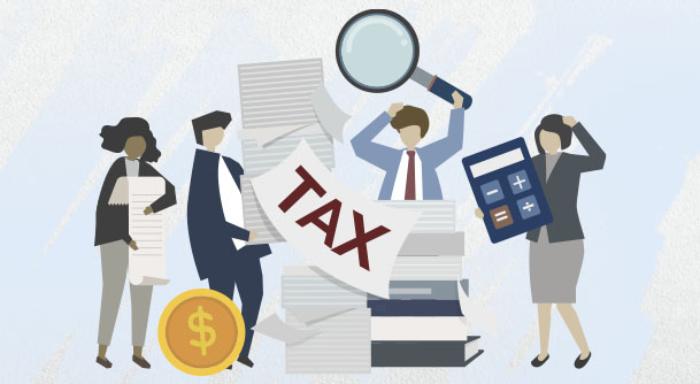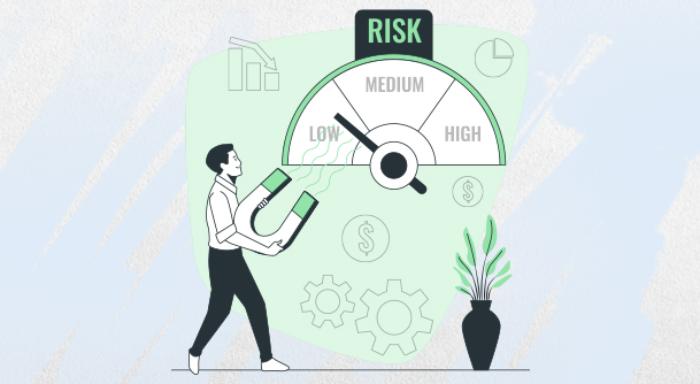Guide to Calculate Your Post-Retirement Money Need
Blog Title
877 |
4/10/25 7:29 AM |
Retirement planning is more than just saving for your golden years—it’s about ensuring you have enough to maintain your lifestyle when you no longer earn an active income. Estimating your post-retirement needs involves considering factors like inflation, healthcare costs, and existing savings.
You can choose a guaranteed income plan that will make sure you receive a steady flow of cash. At the same time, you can get a life insurance policy to protect your family even after you are gone.
Here’s a step-by-step guide to help you determine how much you'll need after retirement, ensuring a comfortable life without the worry of running out of funds.
Step-by-Step Guide to Calculating Your Post-Retirement Money Needs
Step 1: Estimate Your Monthly Expenses Post-Retirement
The first step in calculating how much money you’ll need post-retirement is to estimate your monthly living expenses. This will include food, housing, utilities, transportation, entertainment, and any other personal expenses you may have.
For example:
Housing: Mortgage, utilities, rent.
Food: Groceries and dining out.
Healthcare: Insurance premiums, medical expenses, medication.
Transportation: Car payments, insurance, fuel, or public transport costs.
Let’s say your current monthly expenses total ₹2,50,000, but this will likely decrease after retirement (for example, no more work-related travel expenses). However, some costs, such as healthcare, may rise. You may estimate that after retirement, your monthly expenses will be ₹2,00,000.
Step 2: Adjust for Inflation
Inflation is the silent order of purchasing power. Over the years, the cost of goods and services typically rises, which means you will need more money to maintain your lifestyle. Even though inflation rates vary, a standard estimate is around 3% per year.
To account for inflation, you need to calculate how much your monthly expenses will increase over the years. For example, if your expenses are expected to be ₹2,00,000 now and you plan to retire in 20 years, adjusting for 3% annual inflation would give you a rough estimate of your future expenses.
Formula:
Future Monthly Expenses = Current Expenses × (1 + Inflation Rate) ^ Years Until Retirement
Example:
Future Monthly Expenses = ₹2,00,000 × (1 + 0.03) ^ 20 = ₹3,61,000 (approximately)
This means that in 20 years, you’ll need around ₹3,61,000 per month to maintain the same lifestyle.
Step 3: Determine the Duration of Retirement
Retirement isn’t a fixed period; it could last 30 years or more, depending on when you retire and your life expectancy. The average life expectancy in many countries is around 80 years, but if you retire at 60, that could mean 20-30 years of retirement.
Let’s say you plan to retire at 60 and expect to live until 85. That’s 25 years of retirement.
Step 4: Calculate the Total Corpus Required
Now that you have your future monthly expenses, you can estimate the total amount of money you’ll need for the entire retirement period. This is done by multiplying your future monthly expenses by the number of months in retirement.
Formula:
Total Corpus Required = Future Monthly Expenses × 12 months × Years of Retirement
Example:
Total Corpus Required = ₹3,61,000 × 12 × 25 = ₹1,08,30,00,000
This means you’ll need around ₹108.3 crores in total to cover your retirement expenses for 25 years after accounting for inflation.
Step 5: Factor in Healthcare and Medical Costs
Healthcare costs are one of the biggest and fastest-growing expenses in retirement. As you age, the likelihood of needing medical care increases, so you need to plan for health insurance premiums, medical expenses, medications, and long-term care.
For example, you might want to allocate an additional ₹30,000–₹60,000 per month for healthcare-related costs, which can vary depending on your medical history and needs.
Step 6: Account for Existing Savings and Income Sources
You may already have some savings, pensions, or income-generating assets, such as term insurance, life insurance policies, or investment insurance plans, that can help fund your retirement.
These income streams could include pension benefits, rental income, withdrawals from savings accounts, ULIPs (Unit Linked Insurance Plans), or other investments.
For example:
You have ₹60,00,000 in savings.
You receive ₹1,20,000 per month from a pension.
You expect to withdraw ₹60,000 per month from your investments.
Your total monthly requirement: ₹3,61,000
Step-by-Step Calculation:
Your total income is (pension + investment withdrawals) ( ₹1,20,000 + ₹60,000) = ₹1,80,000
Thus, the shortfall will be:
Total Requirement - Total Income = ₹3,61,000 - ₹1,80,000 = ₹1,81,000
This means that out of the ₹3,61,000 you need monthly, you already have ₹1,81,000 covered, leaving a shortfall of ₹1,81,000.
Step 7: Plan for Emergencies and Legacy Goals
In addition to everyday living expenses and healthcare, it’s important to plan for unexpected costs and potential legacy goals. Emergencies, such as home repairs or medical issues, can arise unexpectedly, making it essential to have an emergency fund or insurance in place to cover them.
Likewise, if you want to leave a legacy for your family, you should factor this into your retirement savings. Legacy planning might include setting aside funds for inheritance or charitable donations.
Sample Calculation: An Example for Better Understanding
Let’s summarise the above steps with a simplified example:
Current monthly expenses: ₹80,000
Expected monthly expenses after retirement: ₹1,00,000
Inflation rate: 3%
Retirement age: 60
Life expectancy: 85 (25 years of retirement)
Existing savings: ₹60,00,000
Expected pension/income: ₹1,00,000 per month
Healthcare costs: ₹30,000 per month
Here’s a step-by-step breakdown:
Your expected monthly expenses at retirement adjusted for inflation over 25 years is ₹2,09,400 per month.
Then, healthcare costs adjusted for inflation at 3% for 25 years is ₹62,820 per month.
Total Monthly Expenses in Retirement:
₹2,09,400 (living) + ₹62,820 (healthcare) = ₹2,72,220 per month
Yearly: ₹32,66,640.
Total for 25 Years:
₹32,66,640 × 25 = ₹8,16,66,000.
Available Funds:
Existing savings: ₹60,00,000
Pension (₹1,00,000 per month): ₹12,00,000 per year for 25 years = ₹3,00,00,000.
Total available: ₹60,00,000 + ₹3,00,00,000 = ₹3,60,00,000.
Shortfall:
Total required: ₹8,16,66,000
Available: ₹3,60,00,000
Gap: ₹4,56,66,000.
Thus, you would need an additional ₹4,56,66,000 to cover your retirement expenses for 25 years.
Conclusion
You can build a long-lasting retirement fund by sticking to a structured plan, estimating your expenditures, and factoring in inflation, healthcare, and unforeseen emergencies. And always remember that a strong retirement plan isn’t just about saving; it’s about investing wisely!
A guaranteed income plan provides a consistent cash flow, whereas a life insurance policy protects your loved ones. And don't forget about the benefits of tax-saving investments.
Plan for your golden years today to enjoy the stress-free retirement you truly deserve.










